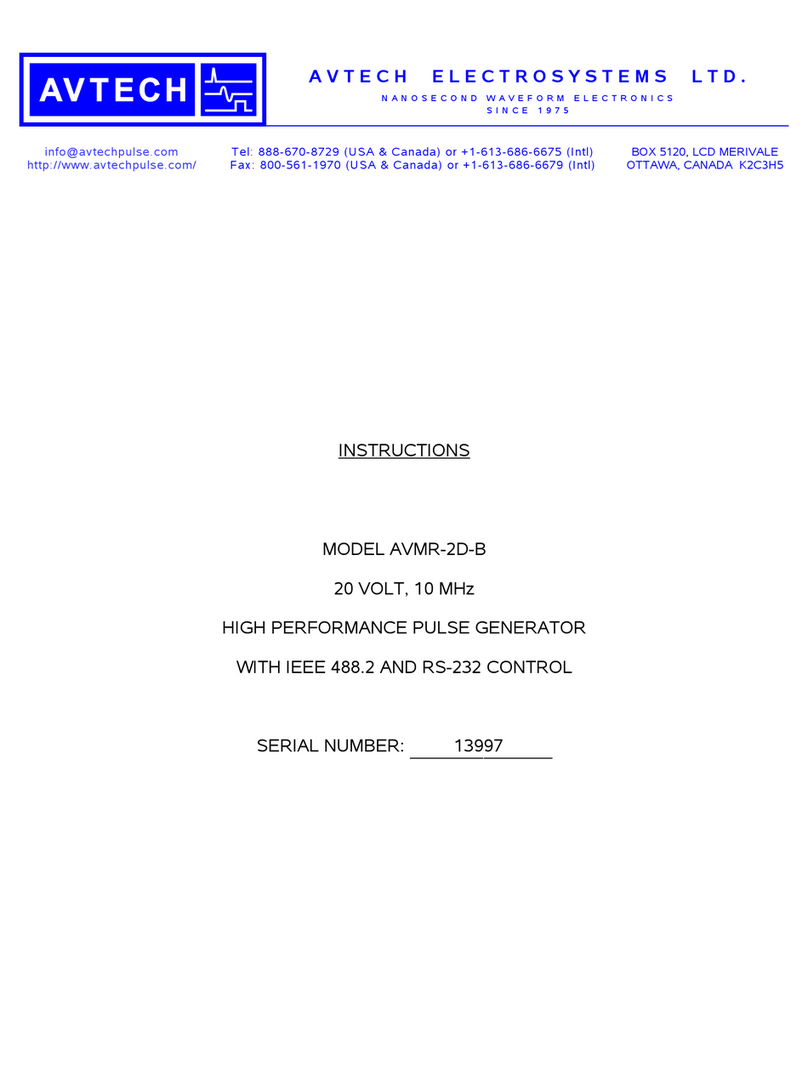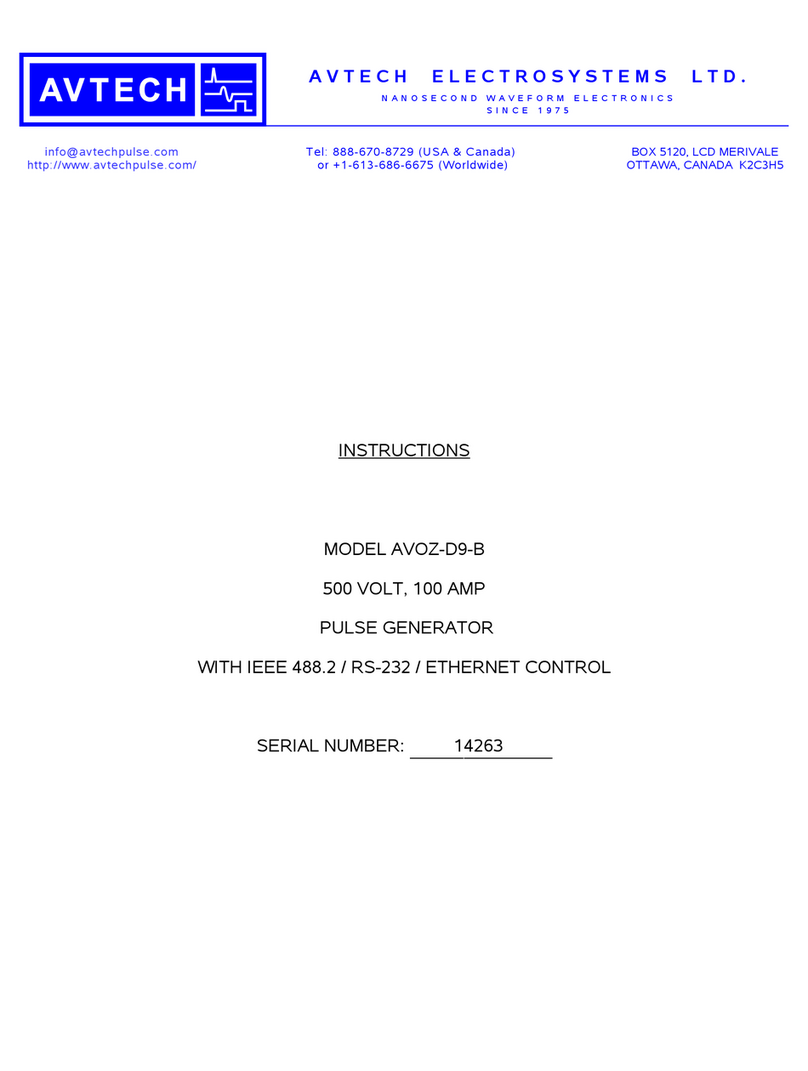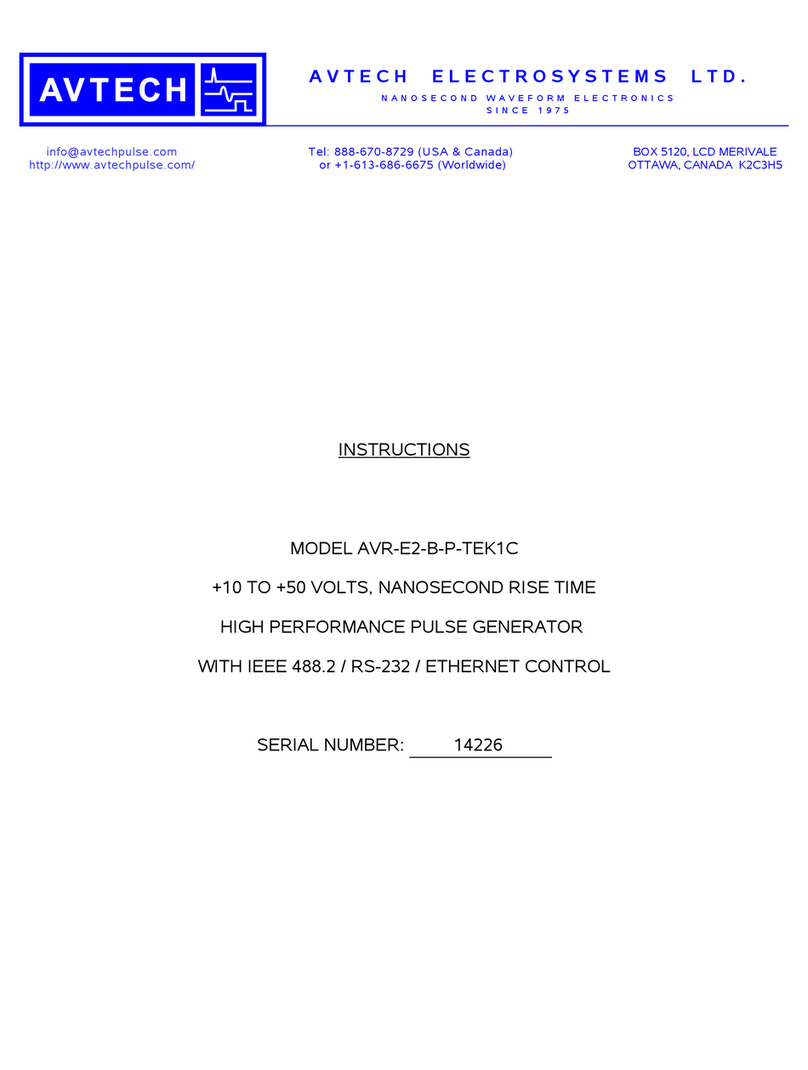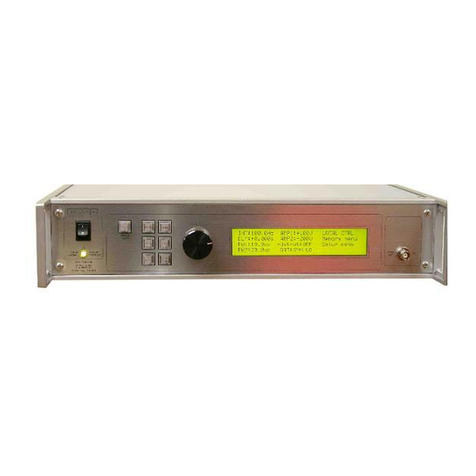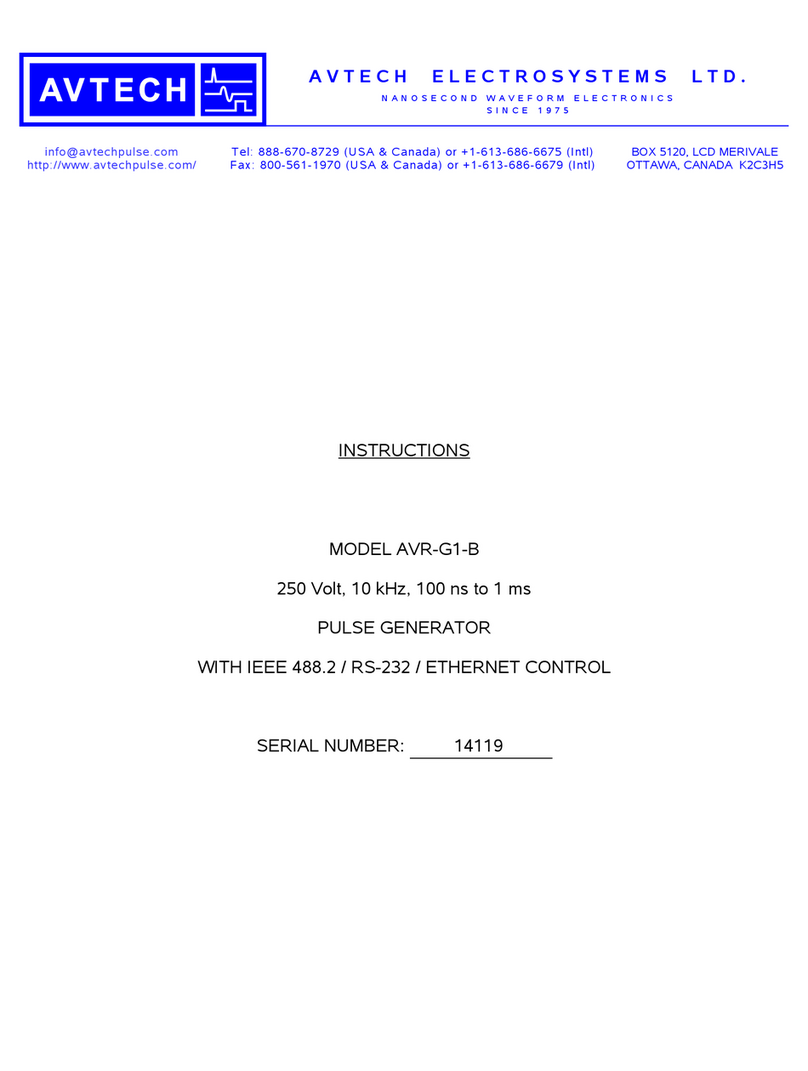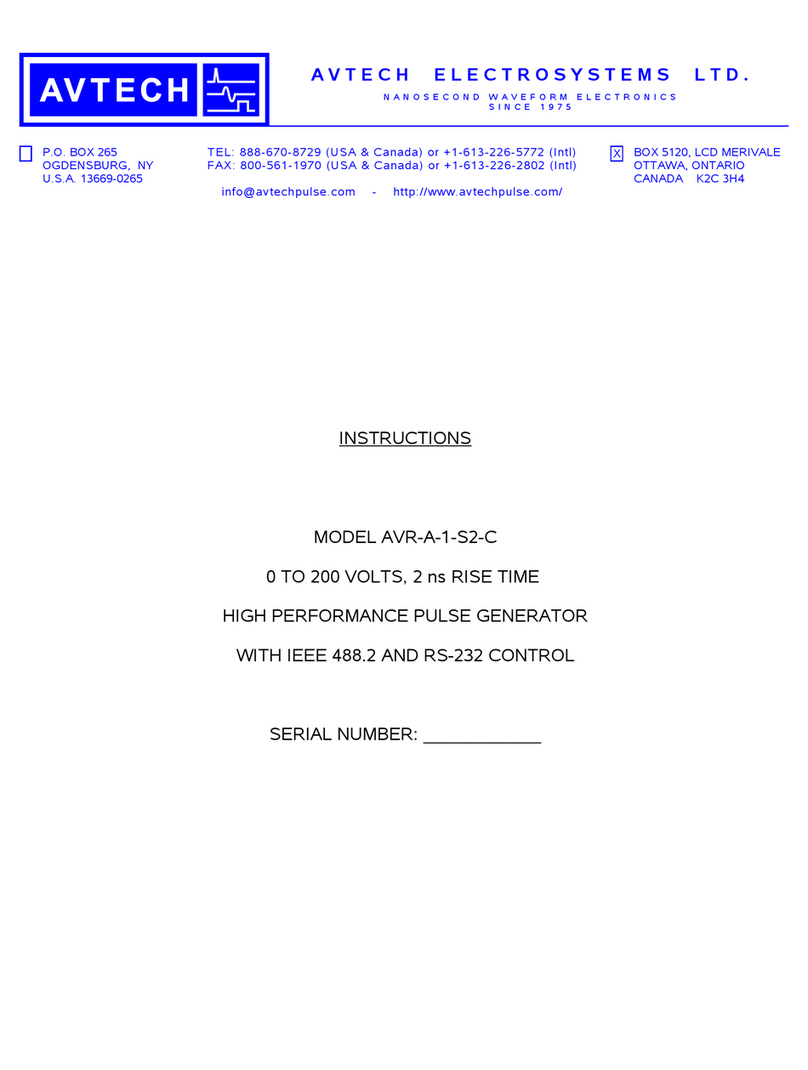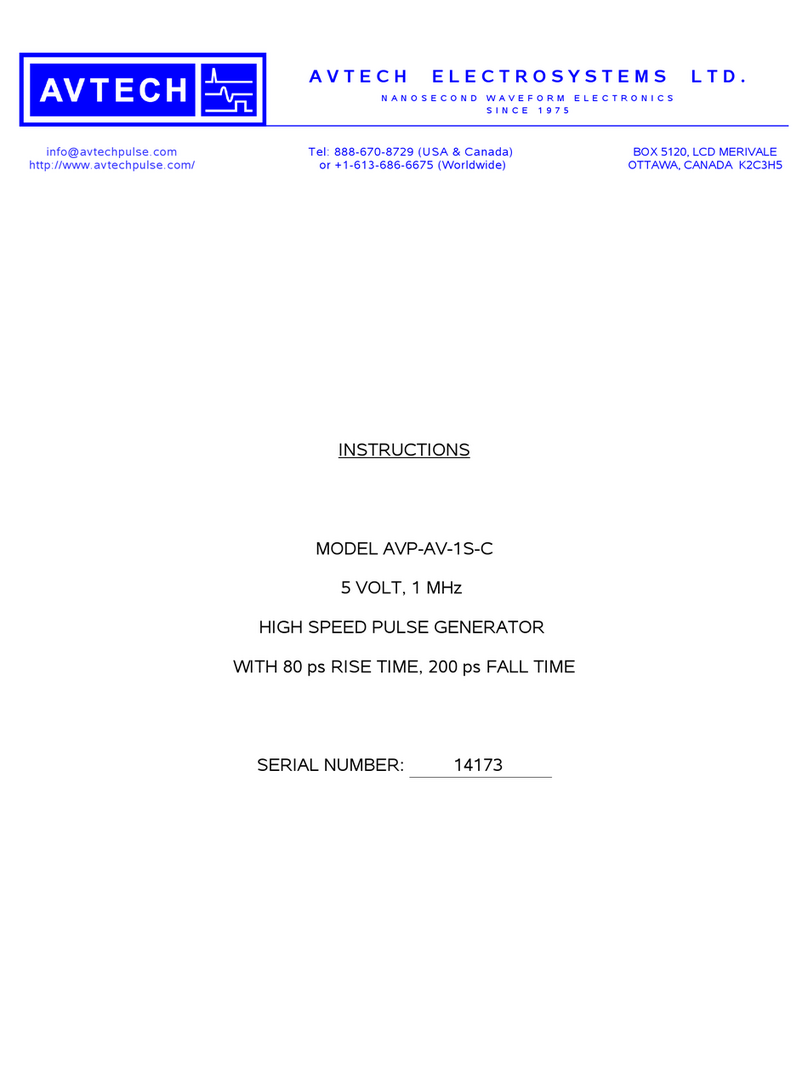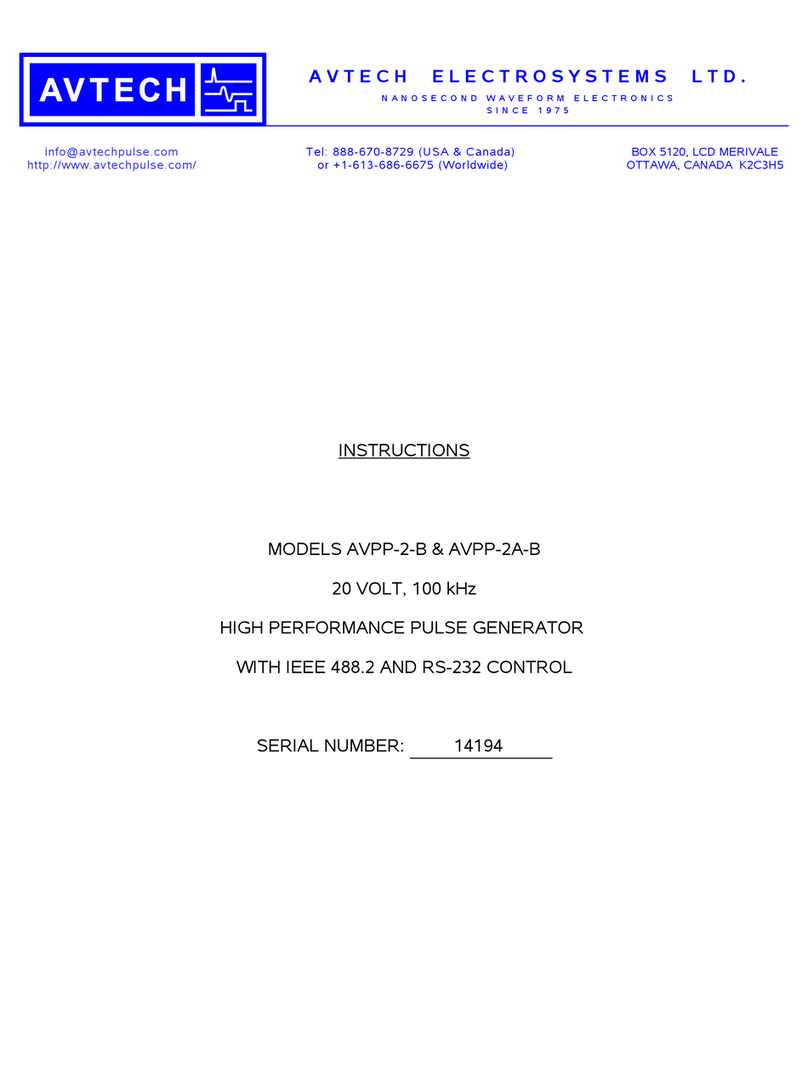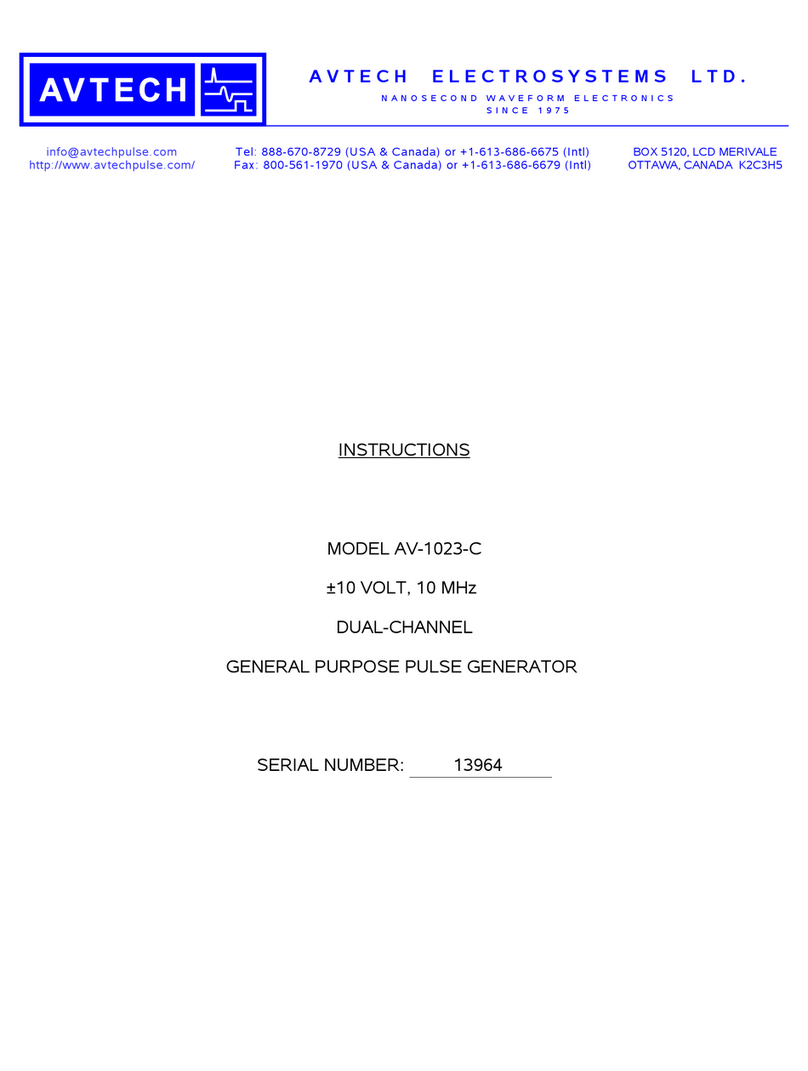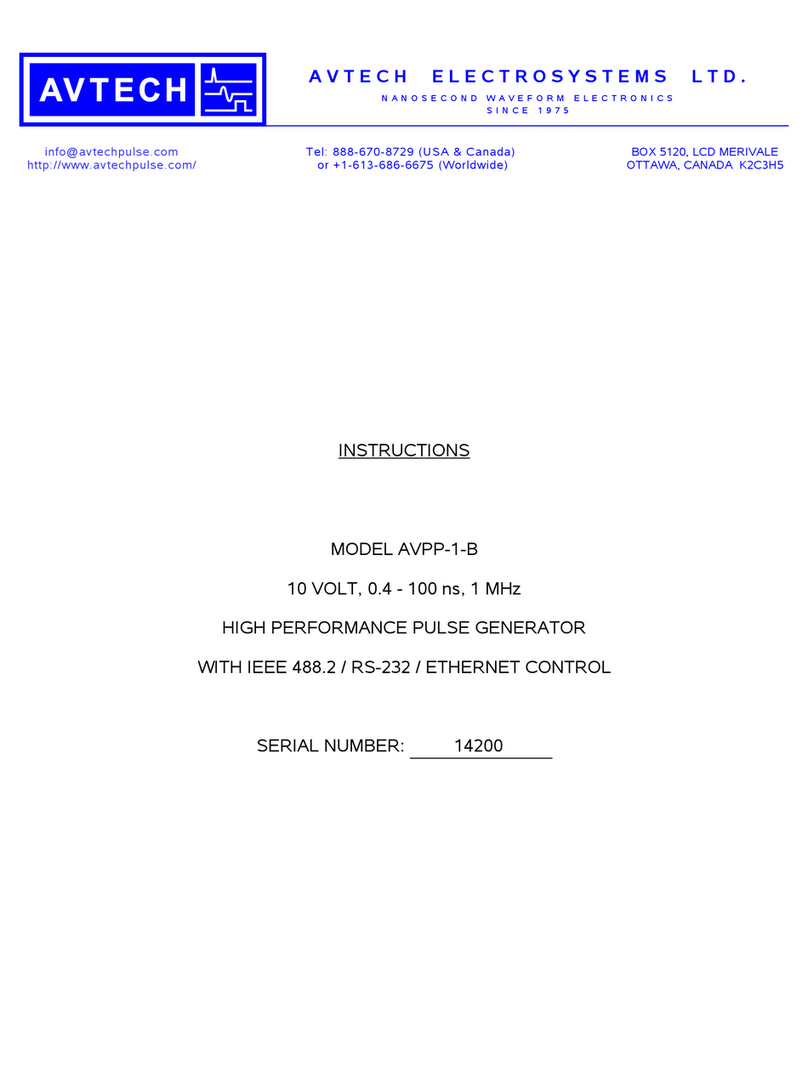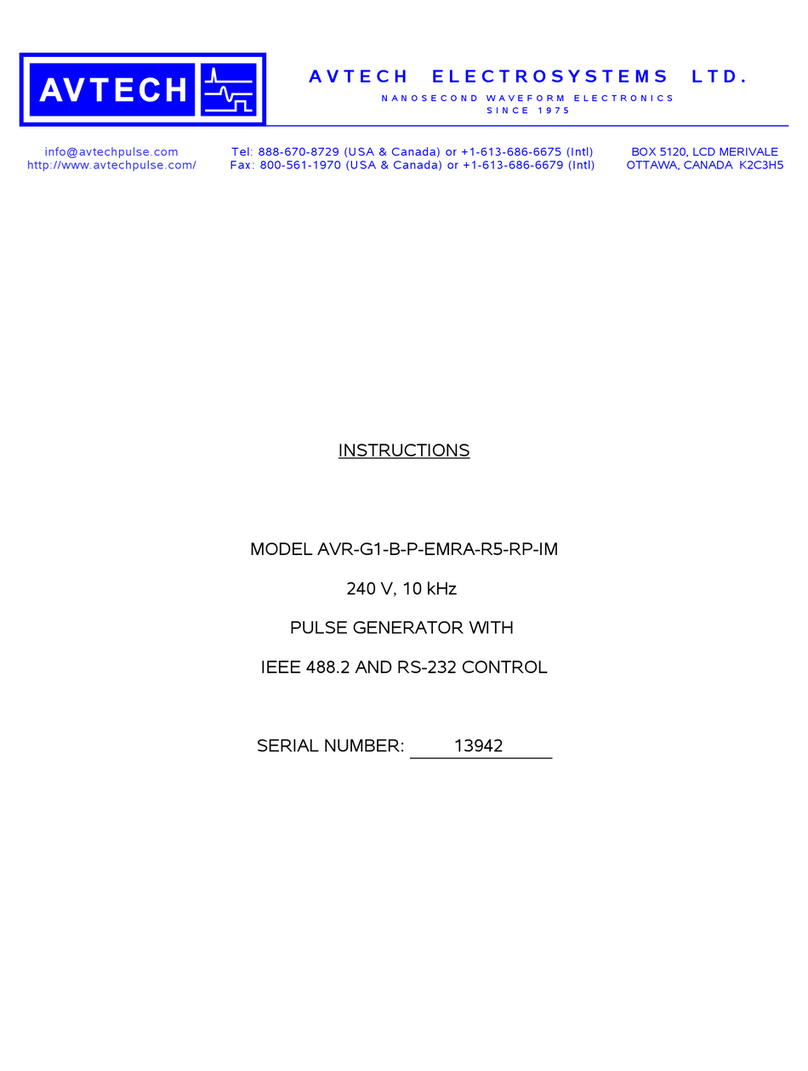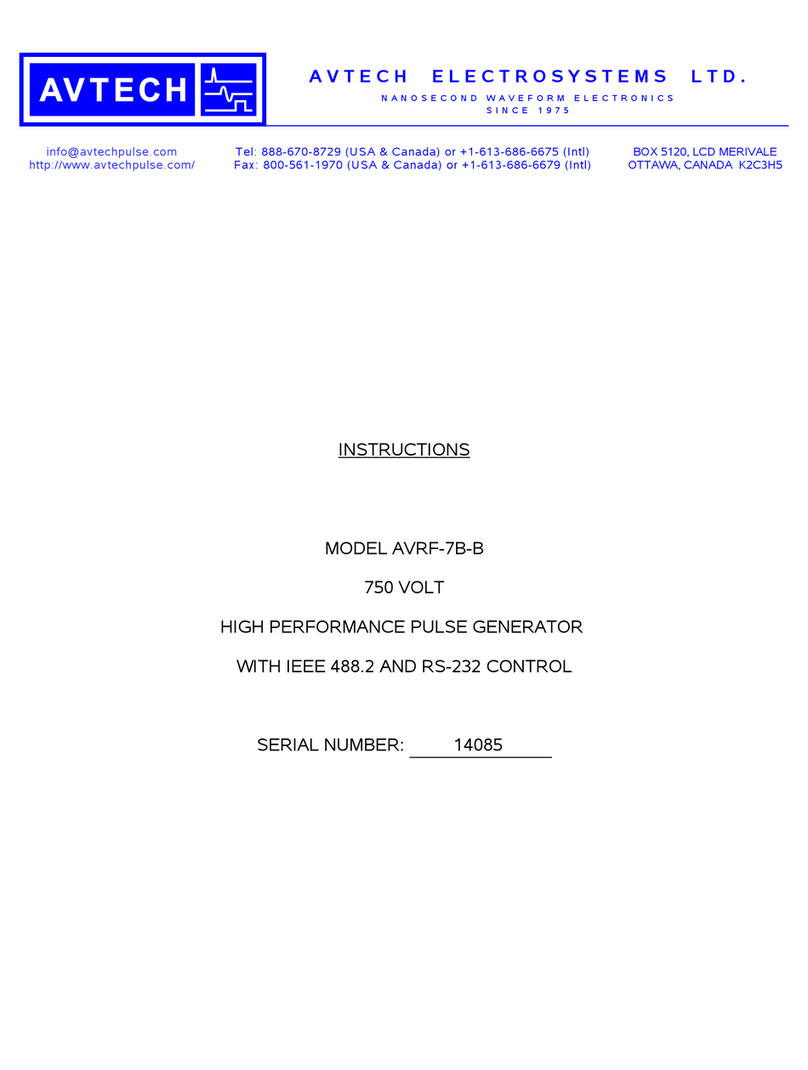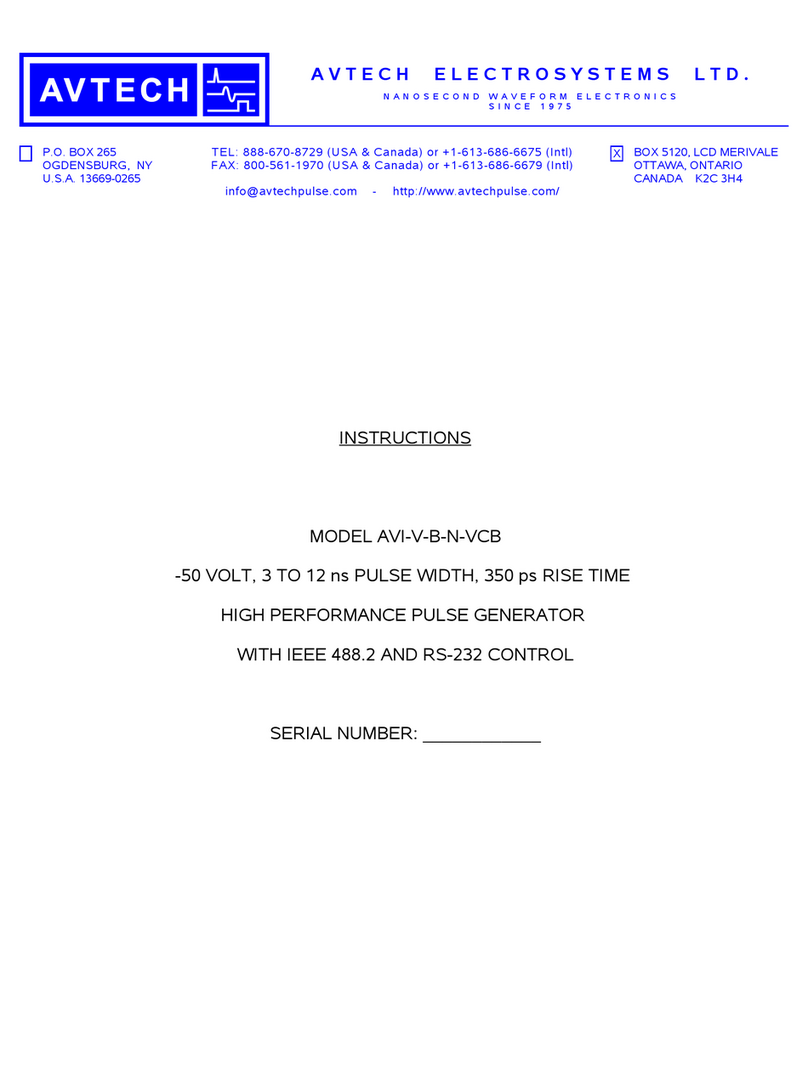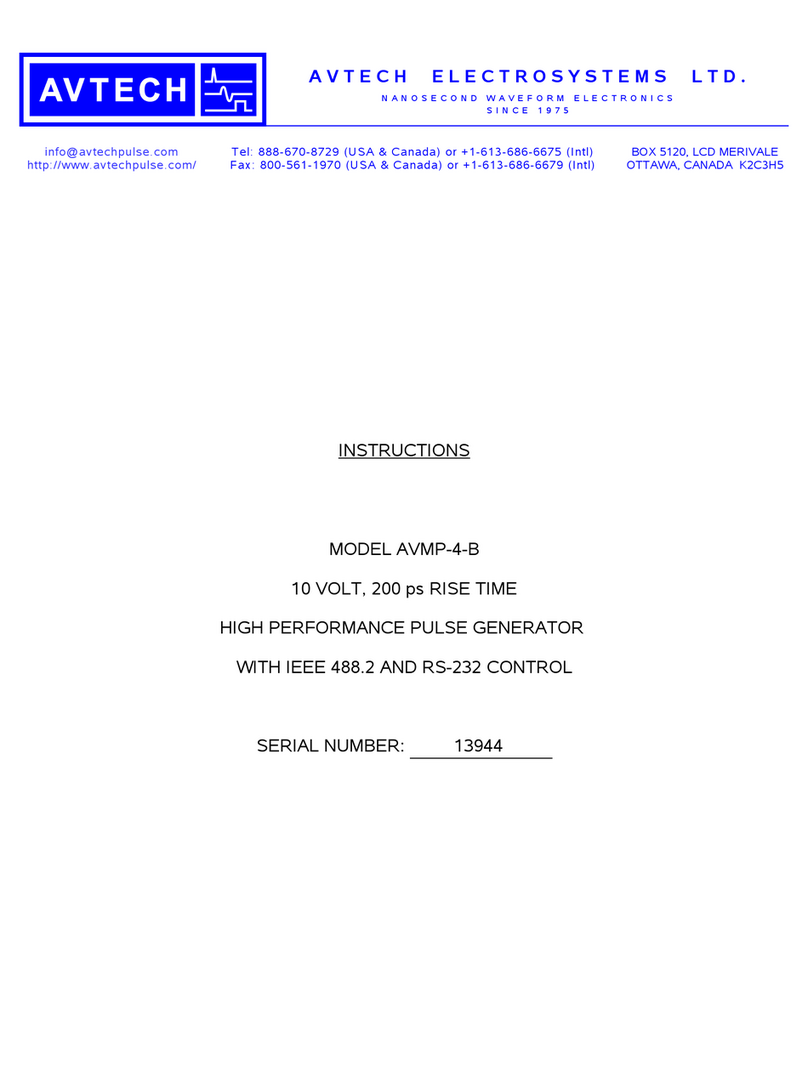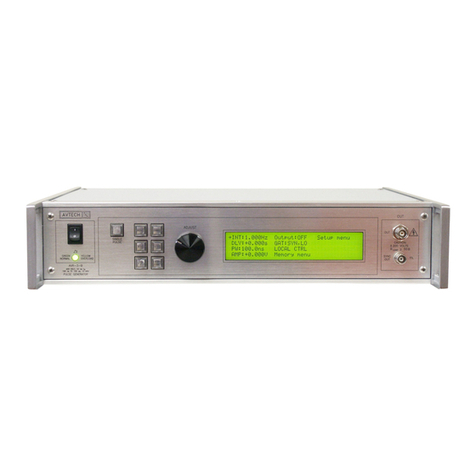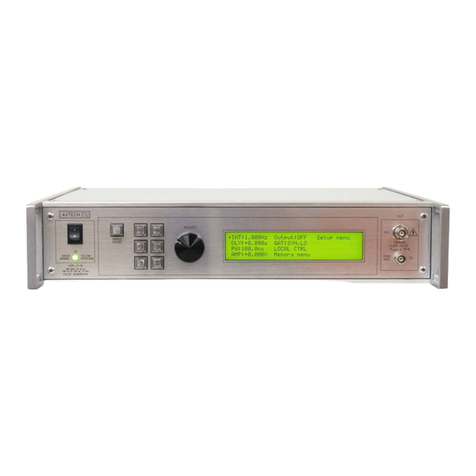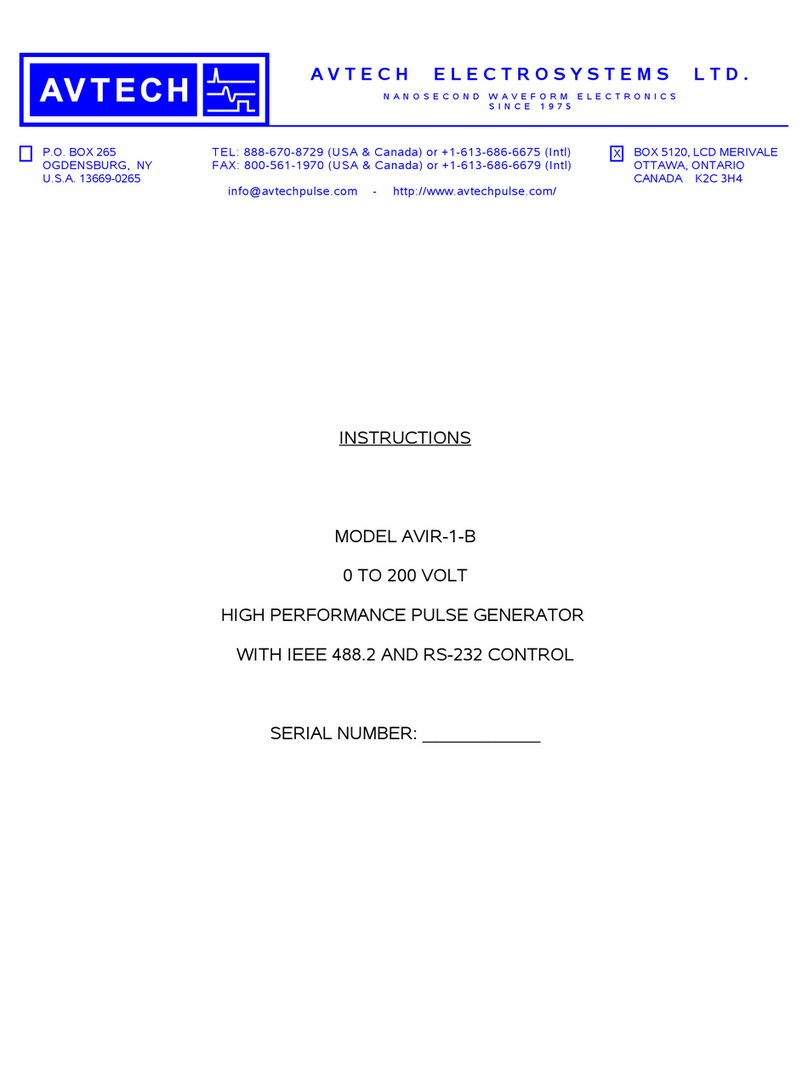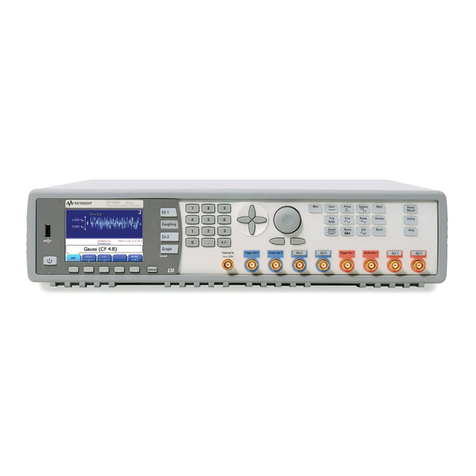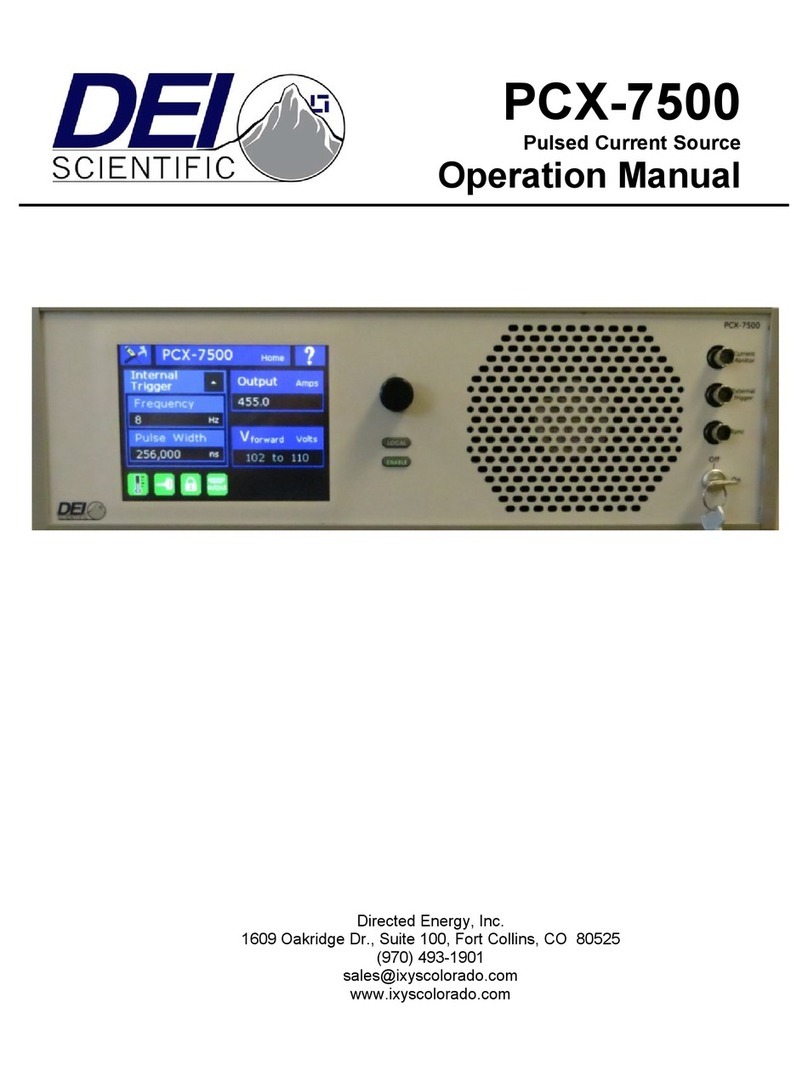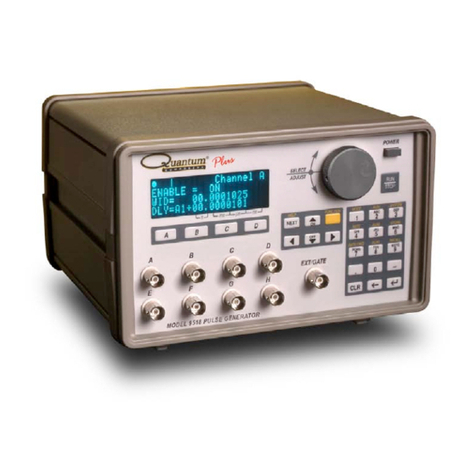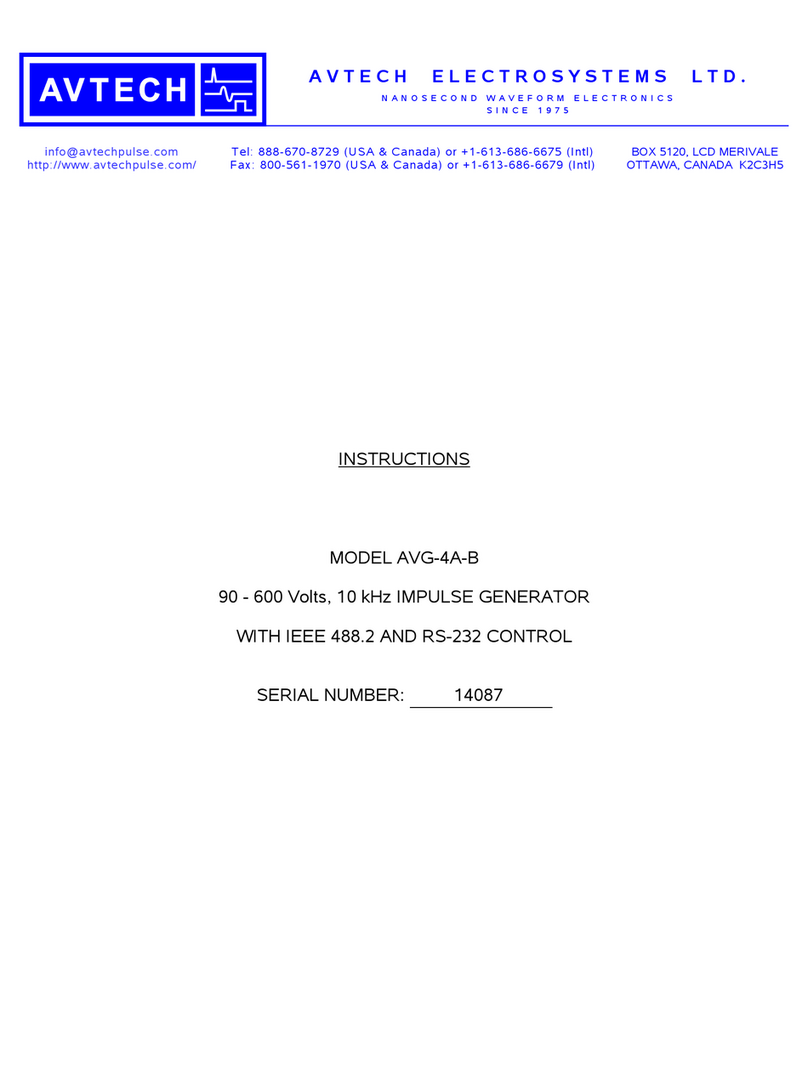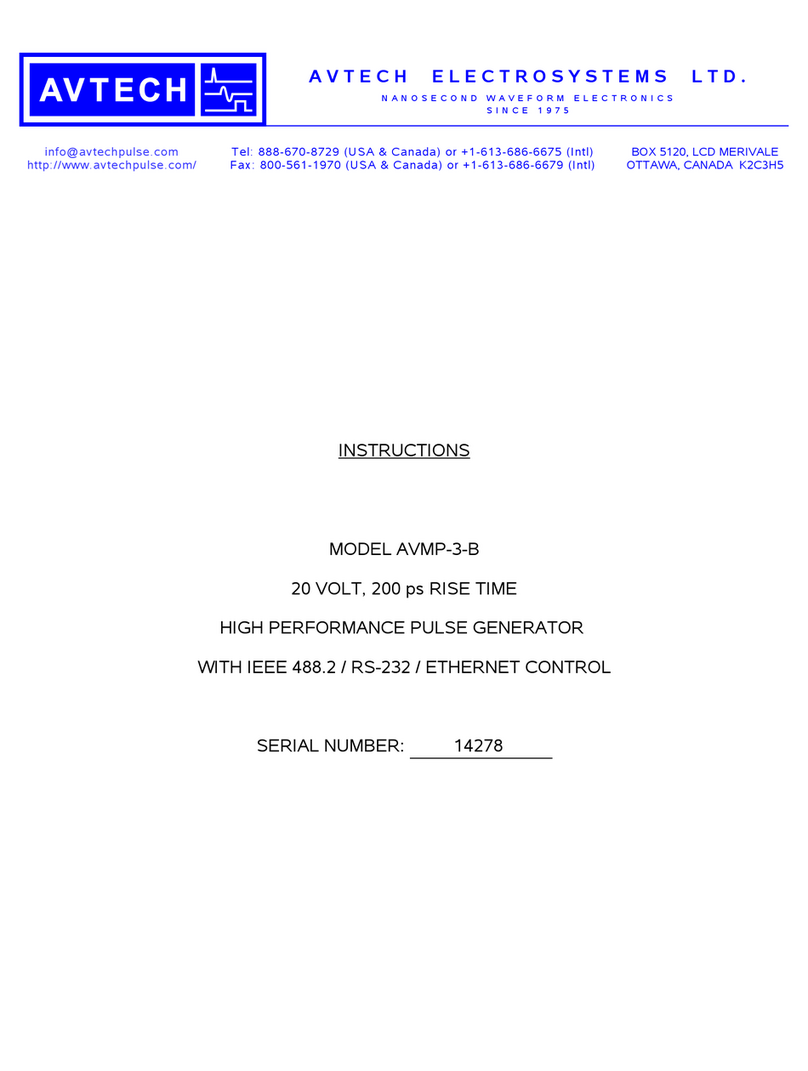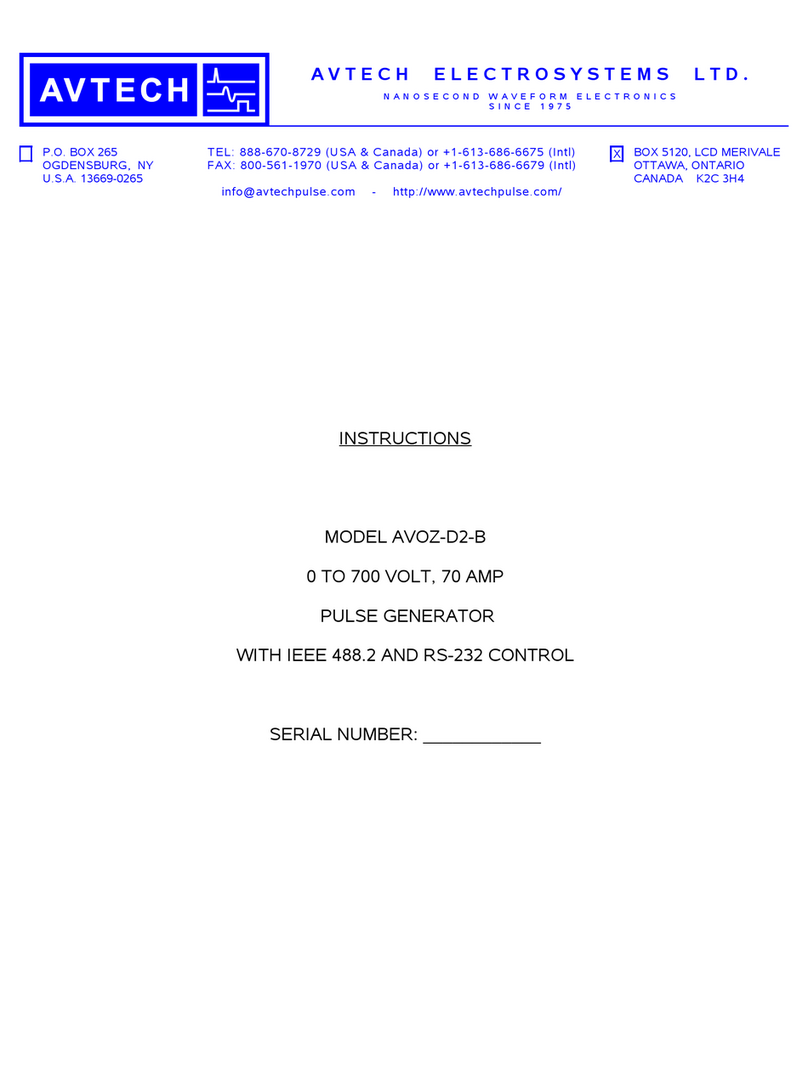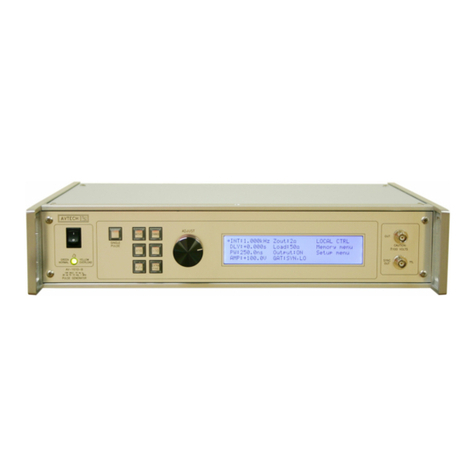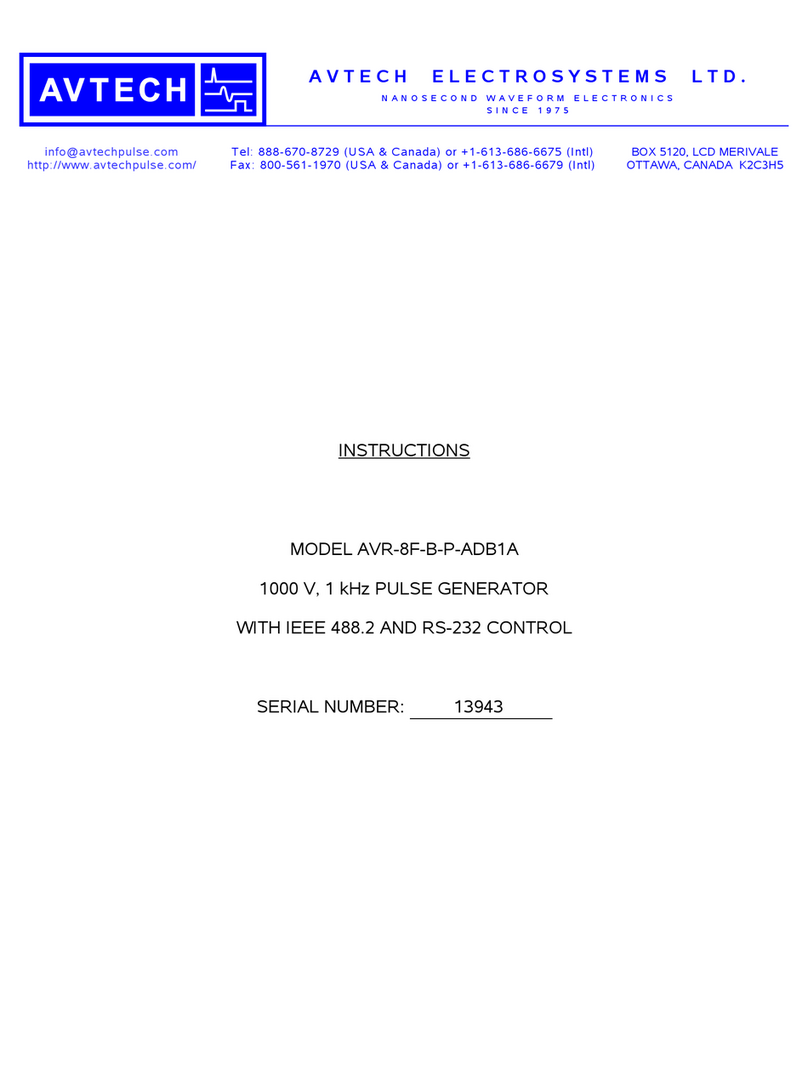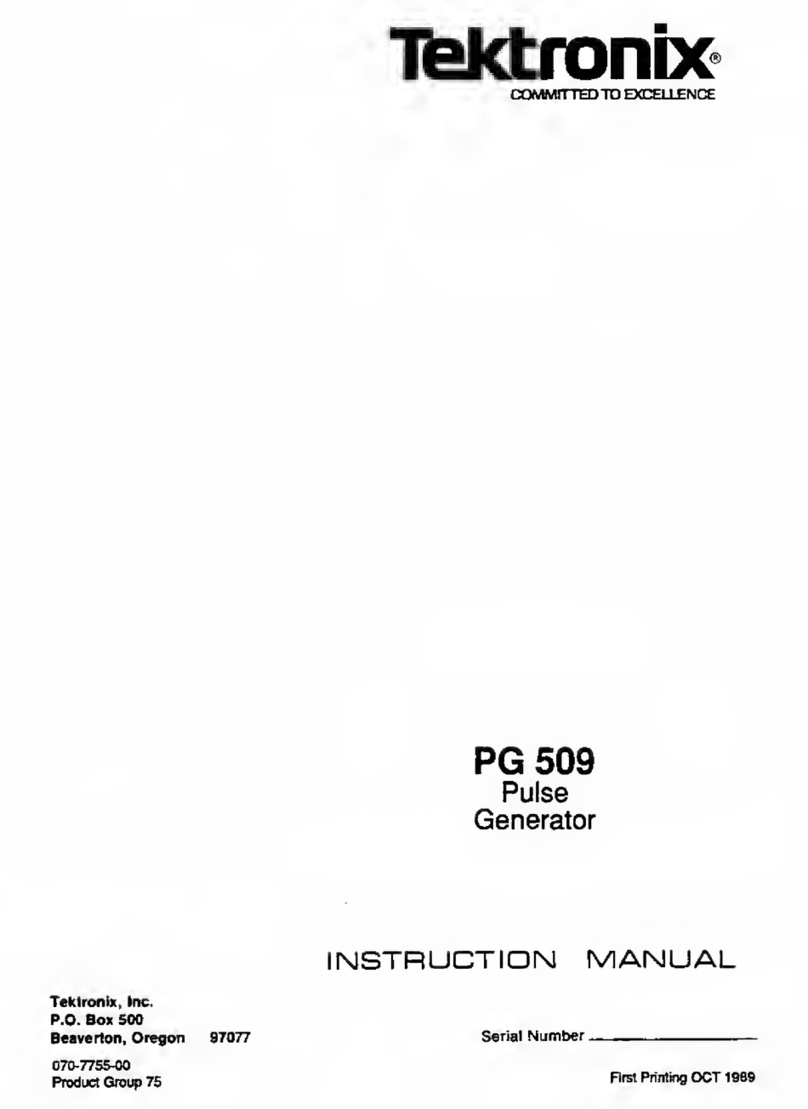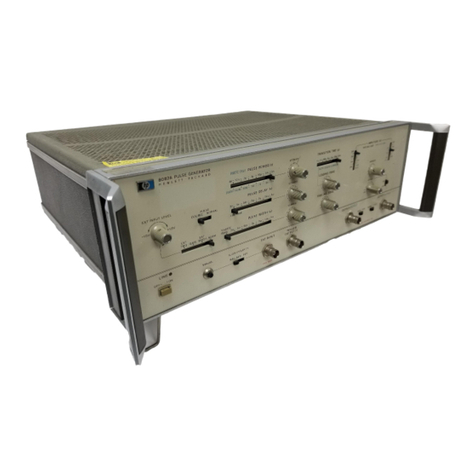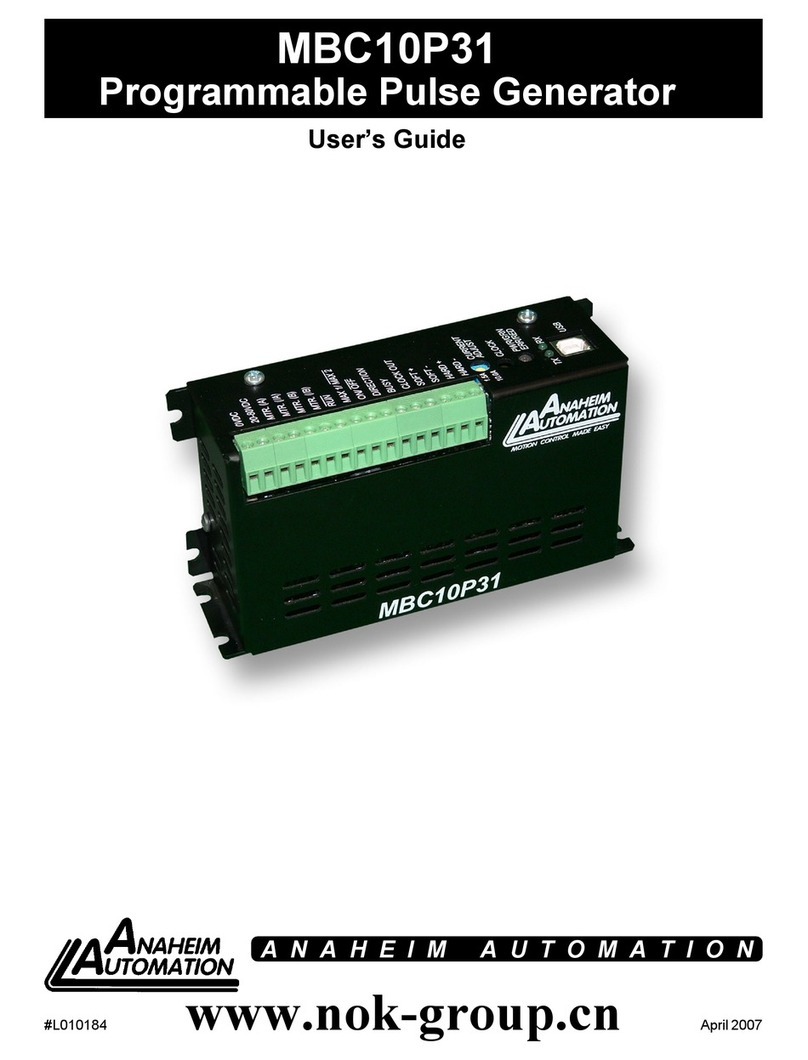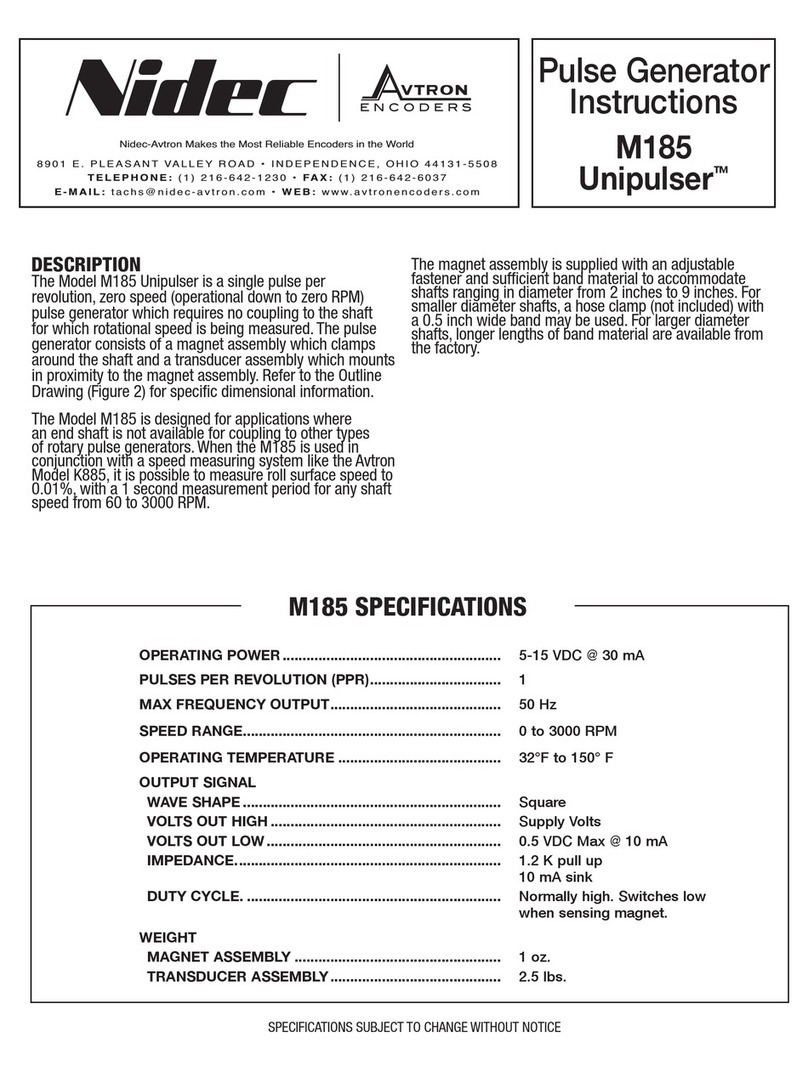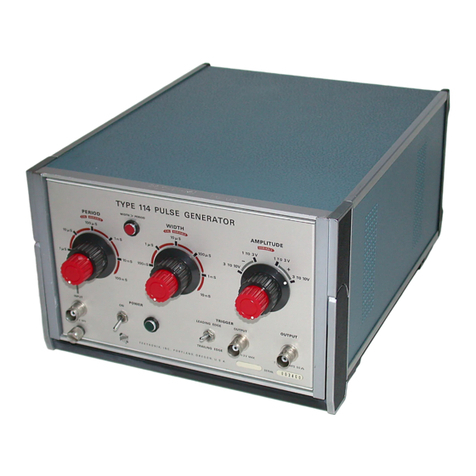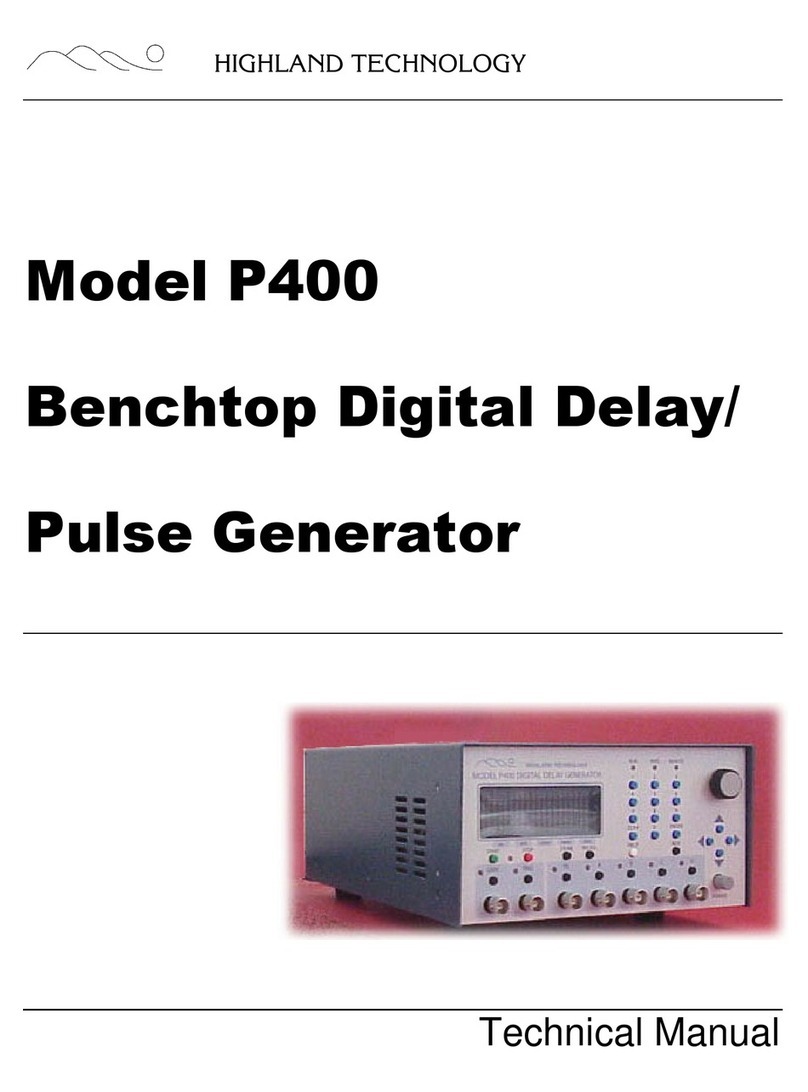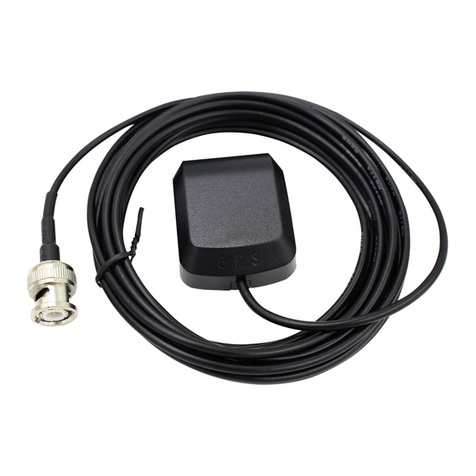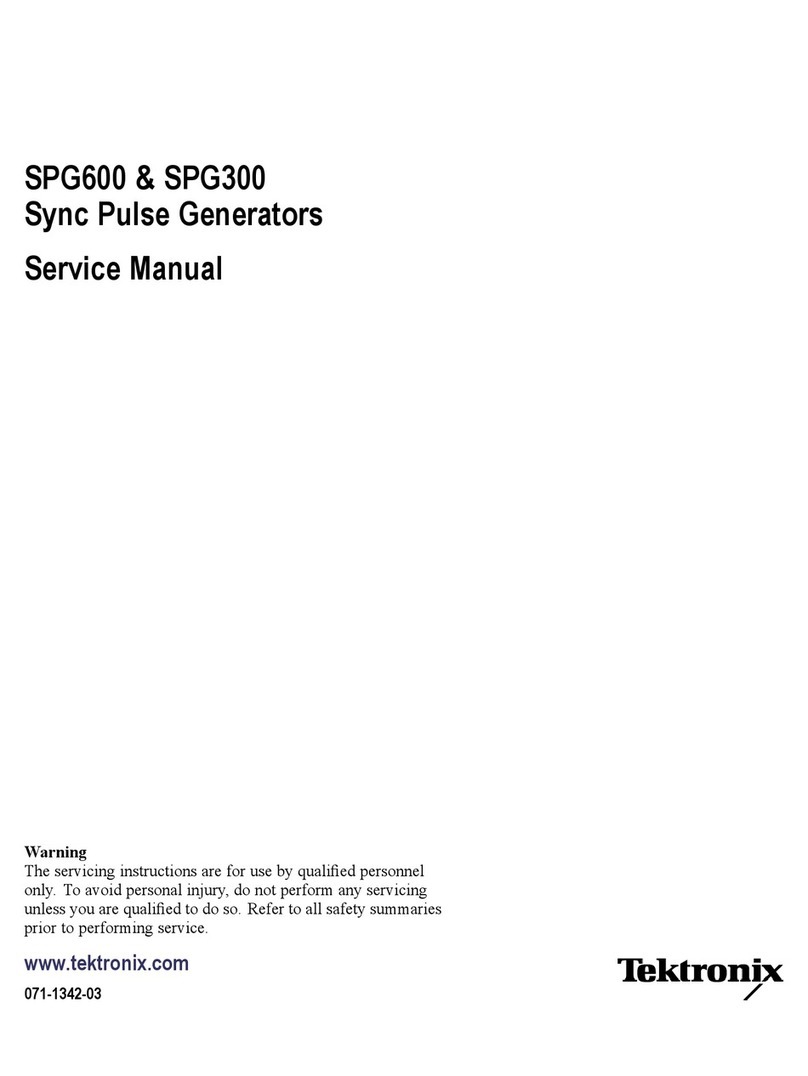SPECIFICATIONS
Model1:AVOZ-D7-B
Amplitude2: voltage (each output):
current (sum of all outputs):
0 - 1000V
0 - 100A
Minimum load impedance (parallel
combination of loads on all outputs): 10 Ω
Max. number of 50Ω loads (if outputs
used separately): 5
Load impedance notes: The load must be non-inductive
Pulse width (FWHM): 0.2 - 10 us
Rise and fall times (20%-80%): < 80 ns
Maximum PRF: 1 kHz
Duty cycle: (max) 0.025%
Output impedance (approx.): 0. Ohms
Max. average output power: 25W
Droop: < 5%, at maximum pulse width and maximum amplitude
Polarity4: Positive or negative or dual polarity (specify)
GPIB & RS-2 2 control1: Standard on -B units. See http://www.avtechpulse.com/gpib for details.
LabView drivers: Check http://www.avtechpulse.com/labview for availability and downloads
Ethernet port, for remote control
using VXI-11. , ssh, telnet, & web:
Included. Recommended as a modern alternative to GPIB / RS-2 2.
See http://www.avtechpulse.com/options/vxi for details.
Settings resolution: The resolution of the timing parameters (pulse width, delay, period) varies, but is always better than
0.15% of (|set value| + 20 ns). The amplitude resolution is < 0.1% of the maximum amplitude.
Settings accuracy: Typically ± % (plus ±1V or ± 2 ns) after 10 minute warmup. For high-accuracy applications requiring
traceable calibration, verify the output parameters with a calibrated oscilloscope5.
Propagation delay: < 200 ns (Ext trig in to pulse out)
Jitter: ± 100 ps ± 0.0 % of sync delay (Ext trig in to pulse out)
Trigger modes: Internal trigger, external trigger (TTL level pulse, > 10 ns, 1 kΩ input impedance),
front-panel “Single Pulse” pushbutton, or single pulse trigger via computer command.
Variable delay: Sync to main out: 0 to 1.0 seconds, for all trigger modes (including external trigger).
Sync output: > + Volts, > 50 ns, will drive 50 Ohm loads
Gate input: Synchronous or asynchronous, active high or low, switchable. Suppresses triggering when active.
Output connectors:
(see above for quantity)
Mainframe: Multiple SMA female connectors, for connection to an equal number
of separate 50 Ohm loads, or for connection to the output module.
Output module (if ordered): Multiple SMA female connectors for connection to mainframe, and one
Type-N female connector for connection to a low impedance load.
Number of output connectors: 5
Optional cable kit:
(RG58C/U cables, 5 feet / 152 cm) 5 cables. Add -CK5 to model number.
Optional output module (for
combining multiple outputs on to a
single Type-N connector6):
Add -OM5 to the model number.
Other connectors: Trig, Gate, Sync: BNC
Power, temperature: 100 - 240 Volts, 50 - 60 Hz.
Dimensions: Mainframe: 100 x 4 0 x 75 mm ( .9 x 17 x 14.8”),
-OM5 optional output module: 28 x 6 x 58 mm (1.1 x 1.4 x 2. ”)
Chassis material: Anodized aluminum, with blue plastic trim
Temperature range: +5°C to +40°C
1) -B suffix indicates IEEE-488.2 GPIB and RS-2 2 control of pulse amplitude, pulse width, delay and PRF. (See http://www.avtechpulse.com/gpib).
2) For operation at voltage amplitudes of less than 10% of full-scale, better results may be obtained by setting the amplitude near full-scale and increasing the load
impedance accordingly. This will provide lower output currents.
) For applications where additional resistance must be added in series with the device under test, Avtech recommends connecting multiple Ohmite (www.ohmite.com) OY-
series ceramic composition resistors in parallel to create a high-power, low-inductance effective resistance. These resistors can be purchased readily at http://www.digi-
key.com.
4) Indicate desired polarity by suffixing model number with -P or -N (i.e. positive or negative) or -PN for dual polarity option.
5) These instruments are provided with a basic calibration checksheet, showing a selection of measured output parameters. These measurements are performed with
equipment that is calibrated on a regular basis by a third-party ISO/IEC 17025:2005 accredited calibration laboratory. However, Avtech itself does not claim any
accreditation. For applications requiring traceable performance, use a calibrated measurement system rather than relying on the accuracy of the pulse generator settings.
6) Type-N is recommended, but a female BNC output connector can also be provided. Add the option -BNC to specify this.
